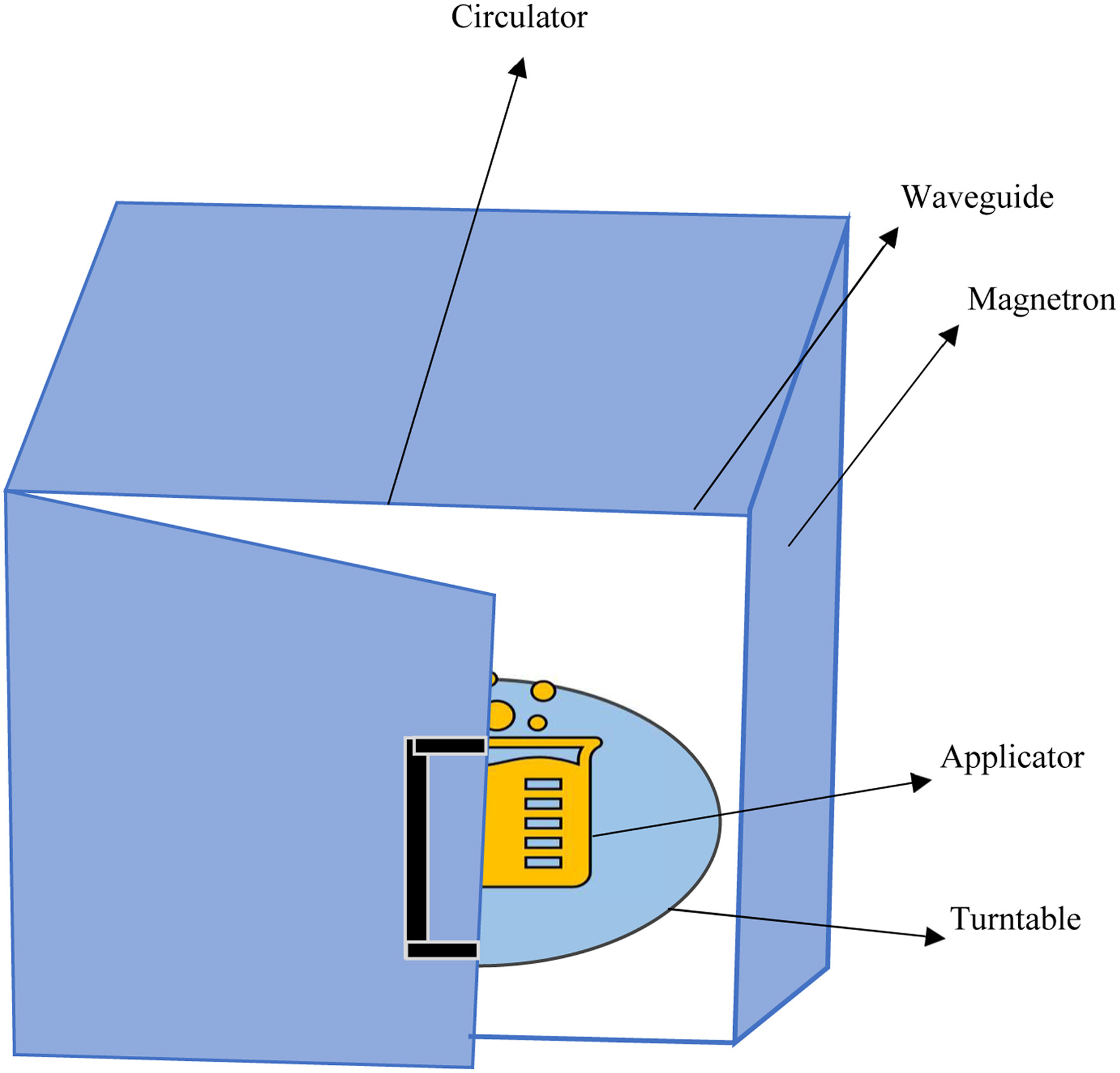
Figure 1. Microwave instrumentation.
| Journal of Food Bioactives, ISSN 2637-8752 print, 2637-8779 online |
| Journal website www.isnff-jfb.com |
Review
Volume 28, December 2024, pages 41-49
Microwave-assisted extraction of bioactives in fruits and vegetables: a comprehensive review
Figures

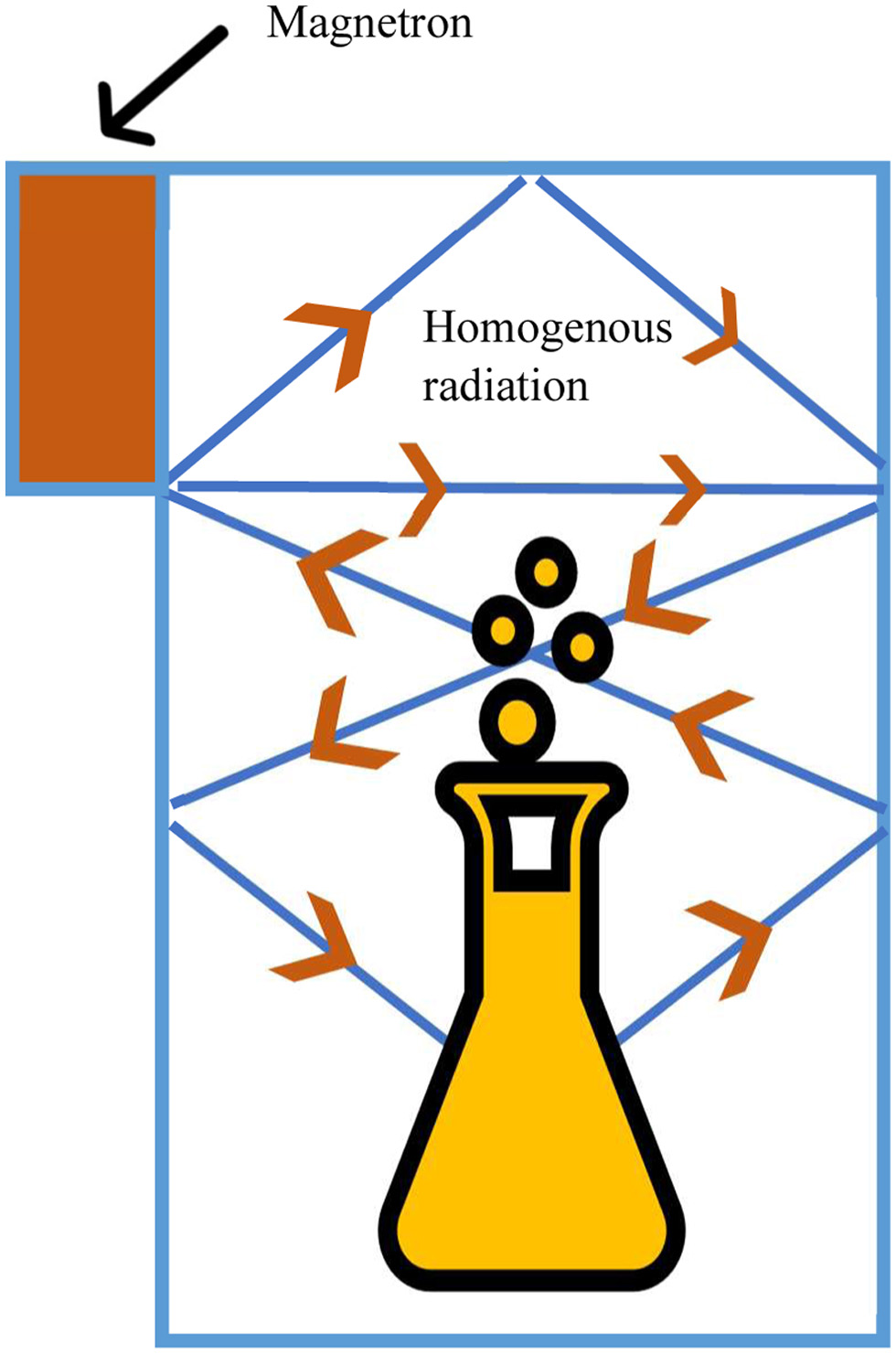
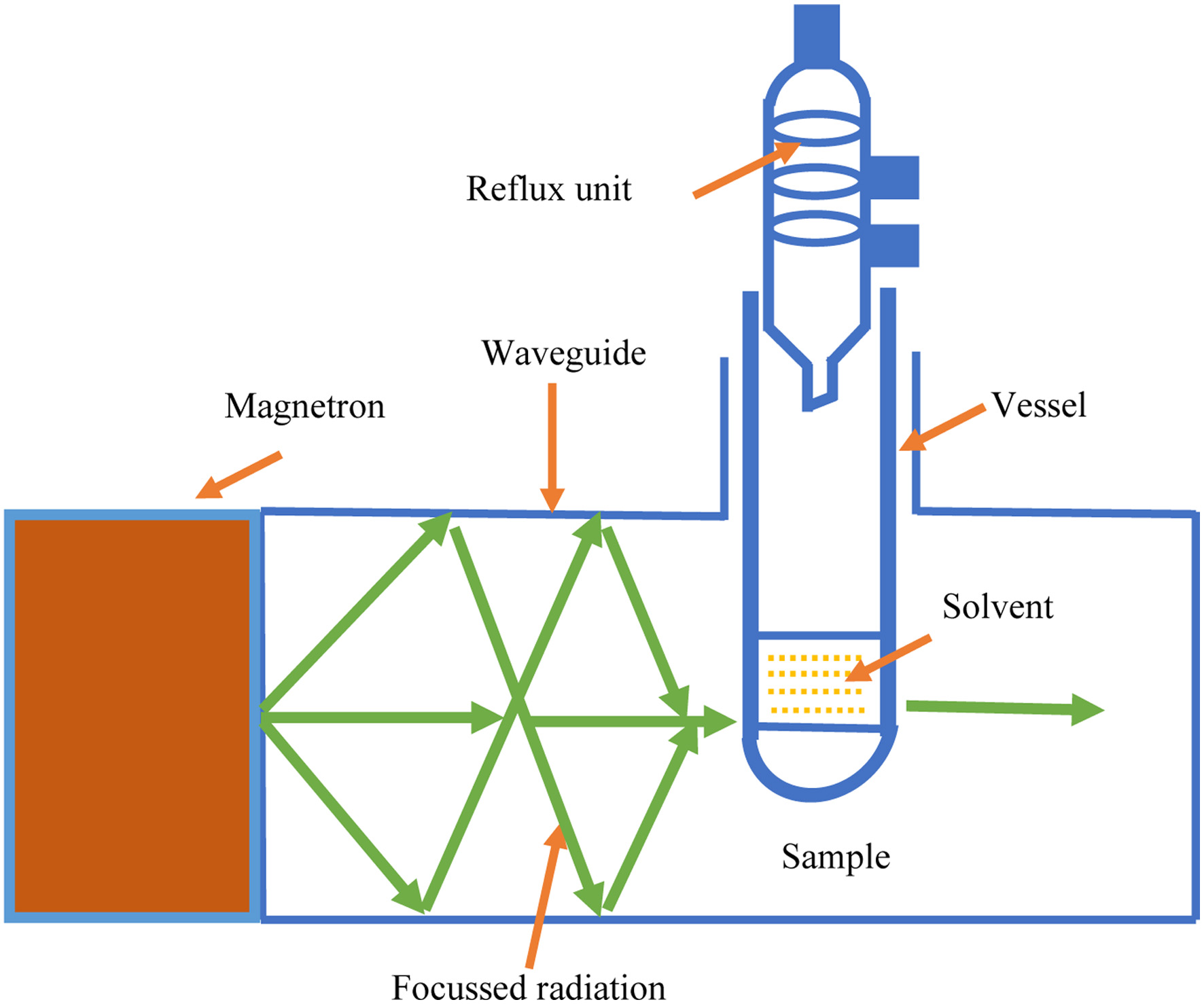
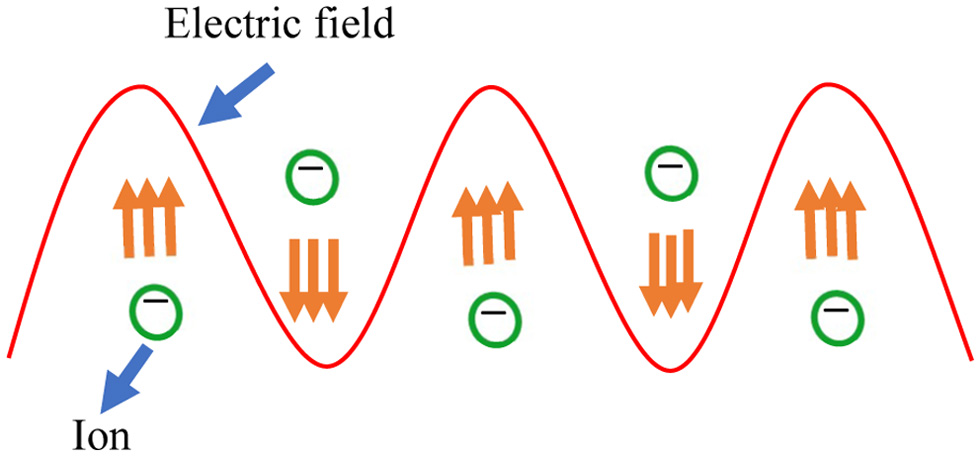
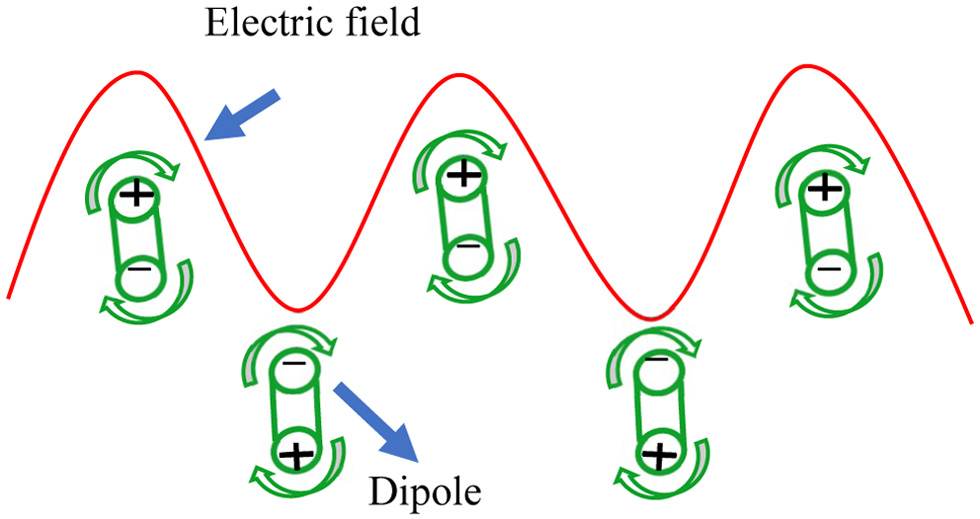
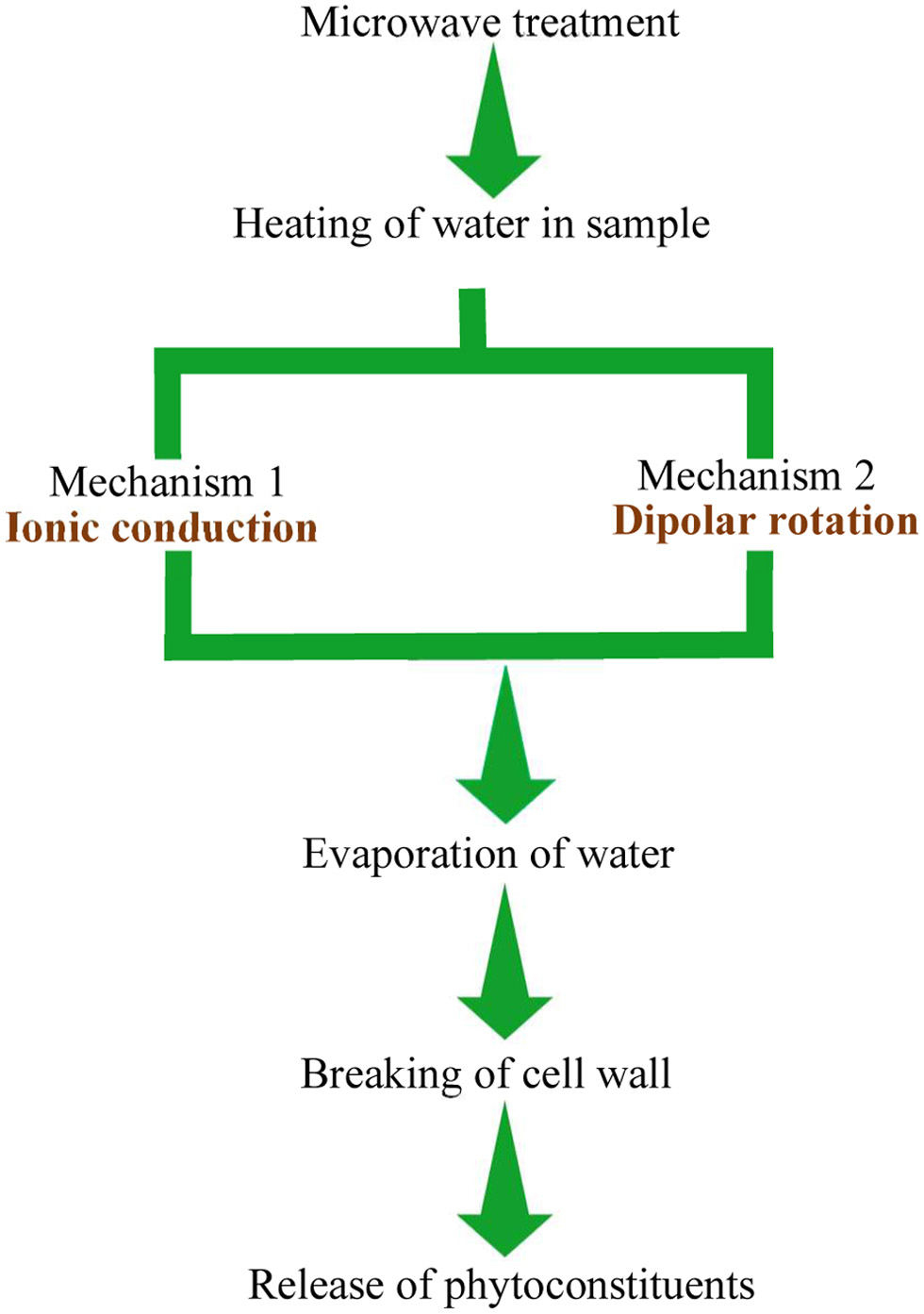
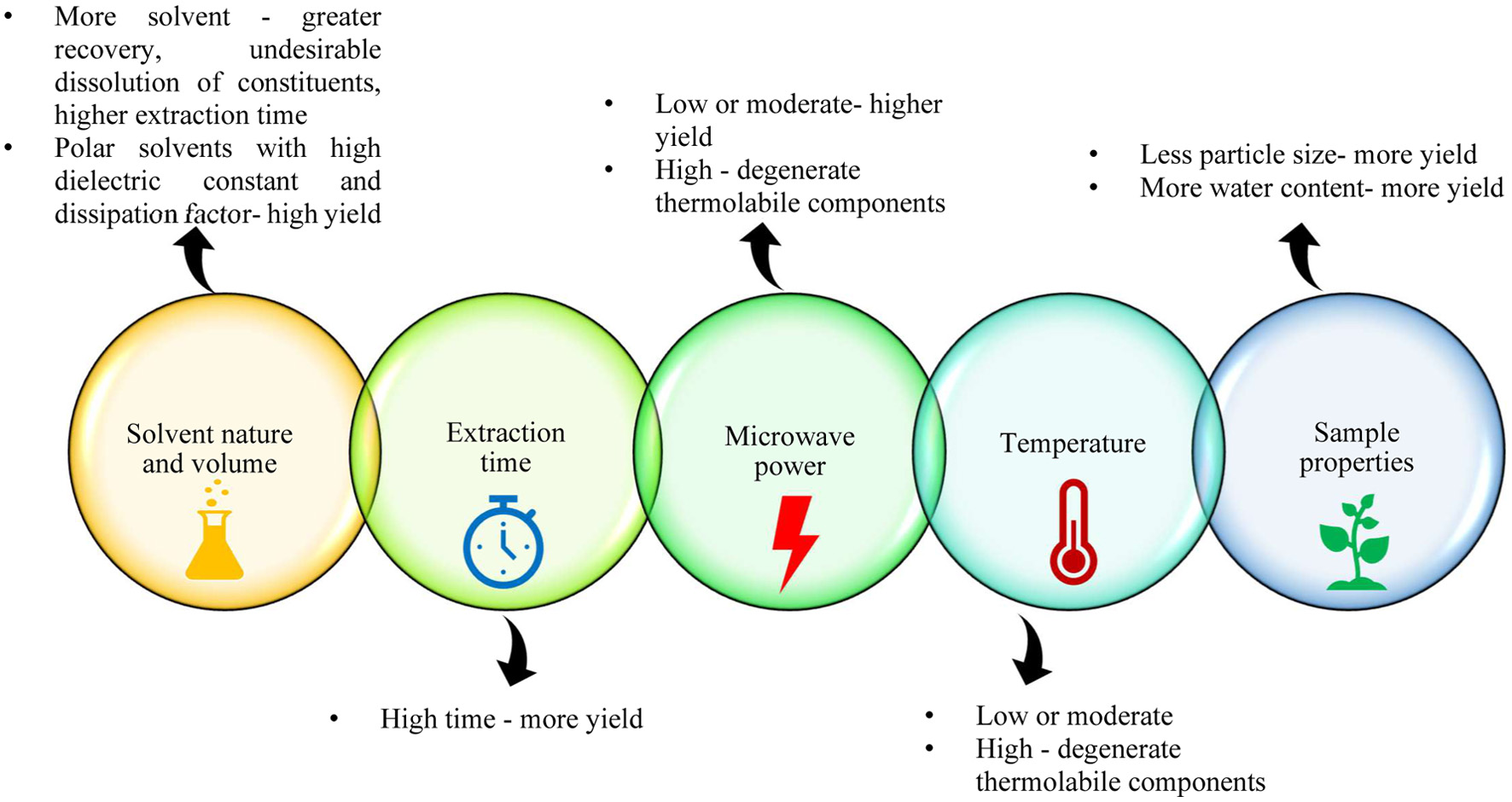
Tables
| Sl. No. | Food waste | Bioactive compounds | Reference |
|---|---|---|---|
| 1 | Tomato waste | Pectin | Lasunon and Sengkhamparn (2022) |
| 2 | Blueberry bagasse | Anthocyanins | Ferreira et al. (2020) |
| 3 | Black tea waste | Caffeine and catechin | Serdar et al. (2017) |
| 4 | Onion peel | Phenols and flavonoids | Das and Mandal (2015) |
| 5 | Mango peel | Phenols | Dorta et al. (2013) |
| 6 | Grape seed | Phenols | Krishnaswamy et al. (2013) |
| 7 | Annatto seed | Polyphenols and carotenoids | Quintero Quiroz et al. (2019) |
| 8 | Grapevine residue | Polyphenols | Jesus et al. (2019) |
| 9 | Eggplant peel | Phenols and anthocyanins | Doulabi et al. (2020) |
| 10 | Hibiscus calyx | Anthocyanins | Cassol et al. (2019) |
| 11 | Date seed | Phenolic compounds, dietary fibre, and vitamins | Ranasinghe et al. (2024) |
| 12 | Black carrot pomace | Polyphenols | Kumar et al. (2019) |
| 13 | Chaya leaves | Phenols | Rodrigues et al. (2020) |
| 14 | Fig leaves | Polyphenols and furanocoumarins | Yu et al. (2020) |
| 15 | Jackfruit peel | Pectin | Govindaraj et al. (2018) |
| 16 | Mango peel | Pectin, polyphenols | Rojas et al. (2015) |
| 17 | Pistachio shell | Phenolic compounds | Maccarronello et al. (2024) |
| 18 | Pomegranate peel | Phenolic compounds | Kaderides et al. (2019) |
| 19 | Saffron tepal | Flavanols, anthocyanins | Cerda-Bernad et al. (2022) |
| 20 | Melon peel | Pectic polysaccharide | Golbargi et al. (2021) |
| Sl. No. | Food waste | Bioactive compound extracted | Parameters used | Results | Reference |
|---|---|---|---|---|---|
| 1. | Sweet lemon peel | Pectin | Microwave power (300 W, 500 W, and 700 W), time (1 min, 2 min, and 3 min), pH (1.5, 2.25, and 3.0) | 700 W, 3 min at pH 1.5 gave maximum pectin yield | Rahmani et al. (2020) |
| 2 | Saffron tepals | Anthocyanins | Solvent ratio (32.5–77.5 ml/g), extraction temperature (35–75 °C), and time (7.5–12.5 min) | The solvent ratio of 77.5 ml/g, extraction temperature (48 °C), and 9.3 min gave the highest amount of anthocyanins | Jafari et al. (2019) |
| 3. | Olive leaves and flowers | Phenolic compounds | Microwave power (800 W), aqueous ethanol (0–100%), solid to solvent ratio (5–15 mg/ml), temperature (60–110 °C), citric acid concentration (1–5 M) | 80% aqueous ethanol, 97.5 °C, 7.5 mg/ml, and 2 M gave maximized yield of antioxidant compounds | Darvishzadeh and Orsat (2022) |
| 4. | Pomegranate waste | Phenols | Microwave power (150–750 W), solvent: solid ratio (10–30 mL/g), extraction time (2–10 min), and ethanol concentration (20–100%) | Ethanol concentration (50%), solvent/ solid ratio (25:1 mL/g), extraction time (4 min), and power (450 W) gave higher extraction yield | Mali and Kumar (2023) |
| 5. | Potato peel | Phenols, ascorbic acid | Microwave power (800 W), methanol (30, 65, and 100%), and solvent to feed (40 mL/2 g) | 67.33% aqueous methanol, 15 minutes extraction time gave optimum results | Singh et al. (2011) |
| 6. | Pistachio hull | Phenolic compounds | Microwave power (80–140 W), extraction time (1–5 min), solvent to sample ratio (8:1 to 20:1), and ethanol concentration (30–70%) | 140 W, 3 min, 1:14, and 50% strength gave the highest phenolic content | Ozbek et al. (2020) |
| 7. | Legume by-products | Inositol | Temperature (50–120 °C), time (3–30 min), and ethanol strength (0–100%) | 50 °C, 30 min and 100% ethanol being the optimal conditions for both pods and seeds | Zuluaga et al. (2020) |
| 8. | Chestnut shells | Phenols | Microwave power (200–1,000 W), time (3–15 min), and solvent concentration (0, 0.05, 0.10, 0.15, 0.2 mol/L) NaOH | 800 W, 12 min., and 0.115 mol/L NaOH concentration gave the highest phenolic content | Kocer et al. (2024) |
| 9. | Cashew apple bagasse | Phenols, ascorbic acid, and tannins | Microwave power (280 W, 430 W, and 530 W), time (30 s, 75 s, 120 s), and bagasse to solvent ratio (1:15, 1:22.5, and 1:30) | 560 W microwave power, 110 s treatment time, and 1:30 (w/v) bagasse to solvent ratio gave the highest yields with good antioxidant activity | Patra et al. (2021) |
| 10. | Asparagus roots | Phenols, flavonoids, and saponins | Extraction time (15 s, 35 s, 55 s, 75 s, and 95 s), concentration of methanol or ethanol (10%, 30%, 50%, 70% and 90%), microwave power (100 W, 250 W, 400 W, 550 W, and 700 W), solid/liquid (S/L) ratio (1:4, 1:28, 1:52, 1:76 and 1:100 g/mL) | Extraction time 57 s, 63% of ethanol, extraction power 460 W, and S/L ratio 1:68 | Zhang et al. (2019) |